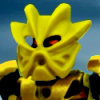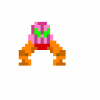-
Posts
778 -
Joined
-
Last visited
-
Days Won
1
Content Type
Profiles
Forums
Gallery
Events
Blogs
Store
Raffles
Everything posted by Akano
-
MY COMRADE On topic, really haven't paid much attention to the Star Wars EU. That and the Mr. Plinkett reviews which are phenomenal. I left a comment on his webzone. Never got my pizza roll. I enjoy many of the Star Wars video james (Battlefront II, LEGO Star Wars II), but my favorite has to be Star Wars Episode I Racer for PC. So many hours logged. So many good memories.
-
I must say that I was deeply saddened by the news of my passing. My sincere condolences to my friends and family. In other news, I've achieved total clairvoyance, what with being dead and all. Your dreams go nowhere, by the way. 8D
- 7 comments
-
- 8
-

-
- Akano
- Toa of Electricity
-
(and 3 more)
Tagged with:
-
So much more enjoyable. I'm on Chapter 10 of Conquest (decided to switch it up), and already I feel much more positive. The characters have fun quirks and interactions, the plot is interesting, and I'm invested in finding out what happens next. Glad that this version is my physical copy.
-
Puzzles you say? I SAID GIVE ME ANOTHER.
-

Equation of the Day #16: The Pentagram of Venus
Akano commented on Akano's blog entry in Akano's Blog
Egassem sdrawkcab! Egassem sdrawkcab! Egassem sdrawkcab! Egassem sdrawkcab! I was taken aback by it the first time I saw it. 'Tis quite pretty. -
I've been playing Fire Emblem Fates for the last couple weeks on Hard, Classic mode. I'm currently on Chapter 15: Wolfskin of Birthright (got the Conquest cartridge, bought the other two as DLC). My thoughts so far: Story: Eh. It should be good; it has all the prerequisites to be good. You make a choice between two warring families (which puts tension on everything and everyone), the history between Nohr and Hoshido seems complex and long-standing, the circumstances of your upbringing are frustrating/unfair, but all in all the story just seems to happen. It has so many things ready to set itself in motion, but instead is very stilted and lacks flow. Characters: Hit and miss for me. Some characters are phenomenal (like Kaden, he's fantastic. Also, Jakob is so wonderfully British. I mean, Nohrian.), while others are just sorta meh. Also, Azura's A support with the female Avatar is the least satisfying support ever. They could have made it a lot more interesting/developing. This and the previous category have made me think to myself, "Man, I just want to play Awakening/Blazing Sword," which doesn't reflect well on this game. Classes: Interesting/why? There are some new Hoshido classes that I think are cool (Kinshi knight!) and others that I prefer the classic classes to (Diviner << Mage; I really don't like Orochi and her horoscope nonsense. Mages at least learn their magic from study, not dubious astrology pseudoscience...). I think I'll enjoy playing Conquest a bit more for this reason, among others. Also, I lost it when Garon says "Do it!" in the Opera House chapter. He looks a bit like Palpatine anyway, but it reminded me of the Game Grumps "Do it!" impressions from their Mario Party playthrough.
-
Welcome to the club! Congrats!
-
Welcome to the physics club! Congrats!
-
The above image is known as the Pentagram of Venus; it is the shape of Venus' orbit as viewed from a geocentric perspective. This animation shows the orbit unfold, while this one shows the same process from a heliocentric perspective. There are five places in Venus' orbit where it comes closest to the Earth (known as perigee), and this is due to the coincidence that When two orbital periods can be expressed as a ratio of integers it is known as an orbital resonance (similar to how a string has resonances equal to integer multiples of its fundamental frequency). The reason that there are five lobes in Venus' geocentric orbit is that 13–8=5. Coincidentally, these numbers are all part of the Fibonacci sequence, and as a result many people associate the Earth-Venus resonance with the golden ratio. (Indeed, pentagrams themselves harbor the golden ratio in spades.) However, Venus and Earth do not exhibit a true resonance, as the ratio of their orbital periods is about 0.032% off of the nice fraction 8/13. This causes the above pattern to precess, or drift in alignment. Using the slightly more accurate fraction of orbital periods, 243/395, we can see this precession. This is the precession after five cycles (40 Earth years). As you can see, the pattern slowly slides around without the curve closing itself, but the original 13:8 resonance pattern is still visible. If we assume that 243/395 is indeed the perfect relationship between Venus and Earth's orbital periods (it's not; it precesses 0.8° per cycle), the resulting pattern after one full cycle (1944 years) is Click for hi-res image. Which is beautiful. The parametric formulas I used to plot these beauties are Where t is time in years, r is the ratio of orbital periods (less than one), and τ = 2π is the circle constant.
-
Direct detection of gravitational waves has been confirmed! Another milestone for physics! Also, Einstein was right again, for those of you keeping track at home. Dangit, Einstein.
-
When I first played Golden Sun, I had no idea that this was actually a mythical place that some supposed existed in the real world. I also had no idea that lemurs were named with a common etymology.
-
All of this. I haven't played Dark Dawn; my roommate has, and he was rather disappointed with the story. If they could reinvent the story without rehashing too much of the old, I'd be all up for a new one. It's so good from there! I will grant you that it takes a long time for you to get to the overworld, but it is worth it for the awesomeness that comes afterward.
-

Equation of the Day #15: The Earth-Moon system
Akano commented on Akano's blog entry in Akano's Blog
All my Equations of the Day are under my Math/Physics category. Not all of them are astronomy, but they are all Math/Physics-y. (obviously ) I'm glad you enjoy it! -
Just finished replaying the first game in the series, and it's still awesome. The world, the music, the characters, the story – all are so wonderful and charming. The soundtrack has to be some of the best music in video game history. After the long, gruelling process that is inputting a Gold level password from my Clear Data (I don't have a GBA link cable with me), I'm now starting The Lost Age. I will miss Isaac and Co. for now.
-
Just started playing this with my roommate (Friend: Toa of Friendship). I love it so much. The single-player campaign was awesome, and now we're doing the extra "future" co-op levels. I love ATLAS' design. I wish he and P-body had opposite eye color. Also, the free DLC is called Peer Review. This speaks to me as a scientist. Cave Johnson is the best. I could listen to him talk forever about ignoring human rights in the name of advancing science.
-
Haldo, BZPorples, I hope everyone had some awesome holiday funtimes! Mine were packed with traveling, visiting friends, gift giving and receiving, and all the food. All of it. I also saw The Force Awakens twice while I was home. It was pretty fantastic. The part where we find out that Chewbacca is Rey's father was quite the twist![/trololololol] Now I am back at school. Though classes don't start until next week, I'm in my lab typing this and sorta doing work. (I've been at a loss to find a certain physical quantity for the past week and have been trying to cope with this by watching various videos. Right now I'm watching Cosmos: A Spacetime Odyssey. When Knowledge Conquered Fear = WIN!) Otherwise, things are going the way they've always been going.
-
Kinda. Our particles are constantly interacting with the environment, and those constant interactions limit their wavefunctions substantially, resulting in classical behavior. Also, it's not that the particles don't exist between different points in space(time), it's that they're spread over a range of space(time). We also don't know if space is discrete or continuous experimentally; we don't have that kind of resolution.
-

The Legend of Zelda: The Wind Waker HD - Year in Gaming Part 8
Akano commented on Ektris's blog entry in blogs_blog_247
Just Skyward Sword and Ocarina of Time at the moment. Really been meaning to get Majora's Mask, but... lazy. Majora's Mask is excellent. I personally recommend the original, if only because the boss fights are better (yes, Gyorg is frustrating, but the remake sucked out the fun of the other bosses, with the exception of the final boss). Other than that, I would recommend the remake. The pictograph quest is so much faster in the remake (12 image capacity, and Carlov takes multiple pictographs in one go for figurines). Compared to the quest in the original, it's a snap. -

Equation of the Day #15: The Earth-Moon system
Akano commented on Akano's blog entry in Akano's Blog
Not sure how to interpret that; was it hard to understand, or did it just blow your mind? (Also, Buu FTW) -
The definition of a planet has been under scrutiny several times, and with New Horizon's recent visit to Pluto, the discussion of Pluto's demotion was on everyone's minds (at least, back in July). But I'm not going to talk about Pluto's demotion (though I think it was totally appropriate from a scientific perspective). Instead, I'm going to talk about the Moon. Should the Earth-Moon system be considered a binary planet? This sounds outlandish at first, since the Moon is a moon, obviously. It orbits the Earth as a natural satellite, just as the Galilean moons (Ganymede, Callisto, Io, and Europa) orbit Jupiter, Titan orbits Saturn, Triton orbits Neptune, and so on, right? The definition of a moon is vague, and thus there are multiple ways of determining whether or not a planet-moon system is really a binary planet. One way of drawing the line between the two descriptions is by finding the barycenter (or center-of-mass) of the system. The center of mass of a collection of N masses is given by where M is the total mass of the system, and mi and ri are the mass and position of the ith object, respectively. If the center of mass of a two-body system lies outside the larger object in that system, call it a binary planet. This makes sense, right? This means that the smaller body doesn't orbit the larger body, but instead they both orbit some point in space. For instance, the barycenter of the Pluto-Charon system lies outside Pluto (0.83 Pluto radii above Pluto's surface), the larger of the two bodies, while the Earth-Moon barycenter lies within the Earth (just under 3/4 of an Earth radius from the planet's center). By this definition, the Pluto-Charon system is a binary (dwarf) planet system, while the Earth-Moon system is is a planet-moon system. (Although, we are slowly losing our moon due to tidal acceleration. In a few billion years, the Moon will have drifted far enough away that the barycenter of the Earth-Moon system will leave the interior of our planet.) However, when you plug in values for the Sun-Jupiter system, you find that the center of mass lies outside the Sun! Indeed, Jupiter is the only natural satellite of the Sun for which this is true. (Does this mean Jupiter should have a different classification from the rest of the planets? Not really; the Sun is around 1000 times more massive than Jupiter, so the reason for this is that Jupiter is very distant from the Sun.) Maybe a different definition is needed to distinguish planet-moons from binary planets, then, since the Sun-Jupiter system is not a binary star (Jupiter is slightly too small to generate nuclear fusion). Another proposition is to look at the so-called tug-of-war value of a body. The tug-of-war value of a moon determines which Solar System object has a stronger gravitational hold, the Sun or the moon's "primary" (the Earth is the Moon's primary). Using Newton's law of gravitation we can take a ratio of the Sun's pull on a satellite to the primary's pull. The result is the tug-of-war value, proposed by Isaac Asimov. Here the subscripts s and p refer to the Sun and the primary, respectively; m is the mass of the body referred to by the subscript; and d is the distance between the moon and the body referred to by the subscript. If the tug-of-war value is larger than 1, then the primary has a larger hold on the moon than the Sun, whereas if it's less than 1, the Sun's gravity dominates. For the Earth-Moon system, it turns out this number is 0.46, which means that the Sun pulls on the Moon with more than twice the force of Earth's pull. This is an oddity among moons, but is not unique. It does mean, though, that the Moon, when viewed from the Sun, never undergoes retrograde motion; it moves across the solar sky without changing direction. Another way to put this is that the Moon is always falling toward the Sun (like the planets), and never in its orbit does it fall away from the Sun (unlike most moons). If you look at the orbits of the Earth and Moon from the point of view of the Sun, they dance around each other in careful step, which is unlike most other moons in the Solar System. For Asimov, this was reason enough to consider the Earth and Moon as a binary planet system. This tug-of-war value does not, however, classify Pluto and Charon as a binary dwarf planet system (they're too far from the Sun for their tug-of-war value to be less than 1). Perhaps the definition of a binary planet is a difficult one to pin down. Should the Moon be promoted to planet, just as Pluto was renamed as a dwarf planet? I don't know, but it gives us something to think about as we look up at the starry night, watching the dance of all the chunks of rock and gas hurtling through space in our sky, to music written by nature and heard through science.
-
You're going to visit my lawn in about a week. I don't see the issue here.
-
It helps remind me how much I love them, too.
-
Best of luck! I'm sure you'll do fine.
-
Ah, gotcha. The second equation is an approximate solution for small oscillatory amplitudes, so that sin θ ≈ θ. This leads to oscillatory solutions (sine and cosine). For larger amplitudes, this approximation breaks down, and the true solution is a lot more complicated. (It involves elliptic integrals, which have to computed.)



